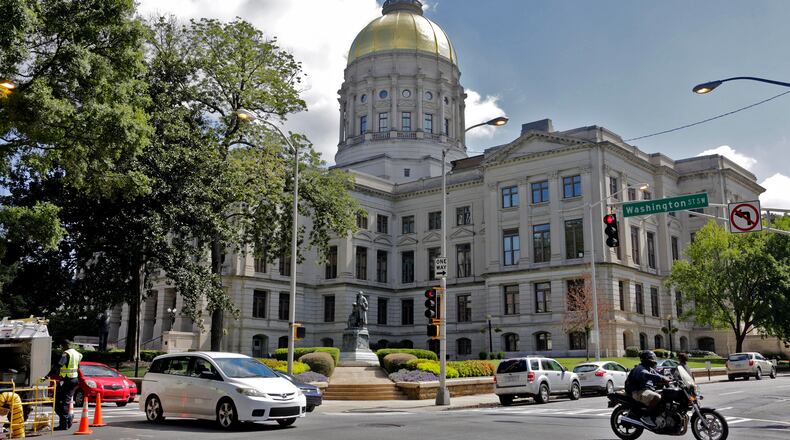Soon the Georgia Capitol, the gold-domed Classic Renaissance-style landmark completed in 1889 and once the tallest building in Atlanta, will be surrounded by an 8-foot-tall metal fence.
The Georgia Building Authority’s Board of Governors approved that plan as part of a $5 million project to make several important state government buildings more secure.
The authority manages 32 buildings and more than 30 other properties, including parking decks, plazas, Confederate cemeteries and warehouses located in the Capitol Hill Complex.
“The Georgia Building Authority provides a clean, comfortable, and safe environment on Capitol Hill,” according to its website.
Its board of governors? Gov. Brian Kemp, Secretary of State Brad Raffensperger, State Treasurer Lynn Riley and State Accounting Officer Alan Skelton – along with three appointees, one each by the governor, lieutenant governor and the speaker of the house. All are Republicans.
This move wasn’t greeted with anything like universal approval, and Democratic Rep. Jasmine Clark made this point: “The state Capitol is the People’s House — not some untouchable fortress.”
There’s little good about separating people so obviously from their government and creating the sense that a government is afraid of its citizens.
And it’s worth recalling some history about a similar action.
In 1968, Gov. Lester Maddox feared violence around the Gold Dome when Rev. Martin Luther King Jr.'s funeral procession passed by. He deployed scores of state troopers to ring the Capitol and protect it from the threat he saw in mourners. In retrospect, Maddox was on the wrong side of history.
The state says it costs $200,000 per month to have National Guard troops protect the Capitol, as protesters have sought to occupy and, in some cases, damage its grounds.
The statue of Confederate Gen. John B. Gordon is a favorite target, in part because he’s presumed to have once been the head of the Ku Klux Klan in Georgia. It looms over the northwest corner of the Capitol grounds.
State law prohibits removing monuments to the Confederacy, although it seems like removing the divisive statue might be cheaper than the cost of the fence.
It’s not yet clear what price in public access to the Capitol the fence might exact. It’s a popular place for school field trips – and a more secure Capitol might complicate annual visits to the legislative session by groups like the rollicking, green-clad Savannah Saint Patrick’s Day Parade Committee. There will certainly be a cost in how citizens see their state government.
The New Georgia Encyclopedia notes that it took about four-and-a-half years to build Georgia’s iconic Capitol. Upon its completion, keys to the building were given to the governor – John B. Gordon, the same guy whose statue is one of the reasons citizens will have more limited access to it now.
The Editorial Board.
Keep Reading
The Latest
Featured


